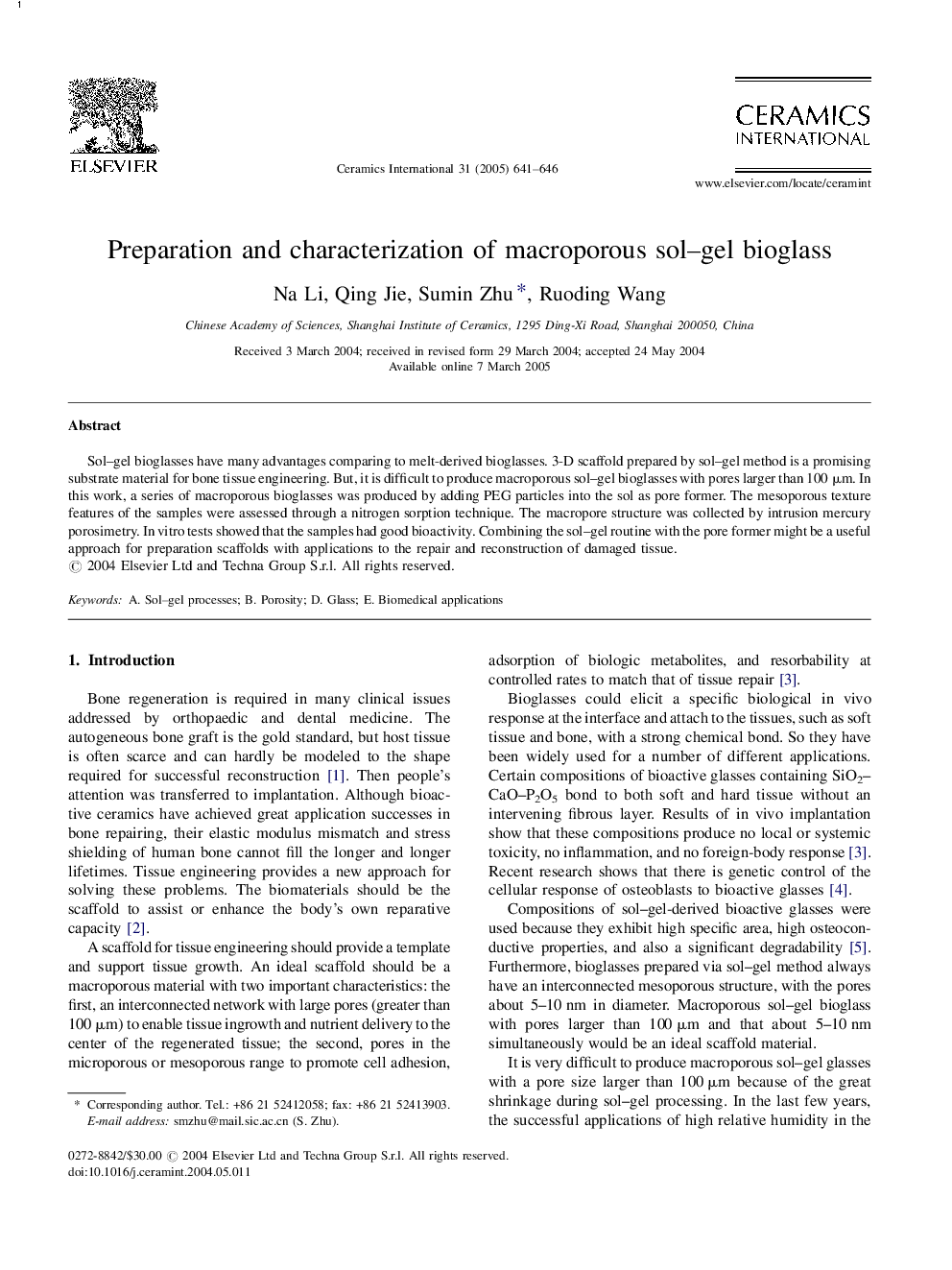| Article ID | Journal | Published Year | Pages | File Type |
|---|---|---|---|---|
| 10626560 | Ceramics International | 2005 | 6 Pages |
Abstract
Sol-gel bioglasses have many advantages comparing to melt-derived bioglasses. 3-D scaffold prepared by sol-gel method is a promising substrate material for bone tissue engineering. But, it is difficult to produce macroporous sol-gel bioglasses with pores larger than 100 μm. In this work, a series of macroporous bioglasses was produced by adding PEG particles into the sol as pore former. The mesoporous texture features of the samples were assessed through a nitrogen sorption technique. The macropore structure was collected by intrusion mercury porosimetry. In vitro tests showed that the samples had good bioactivity. Combining the sol-gel routine with the pore former might be a useful approach for preparation scaffolds with applications to the repair and reconstruction of damaged tissue.
Related Topics
Physical Sciences and Engineering
Materials Science
Ceramics and Composites
Authors
Na Li, Qing Jie, Sumin Zhu, Ruoding Wang,
